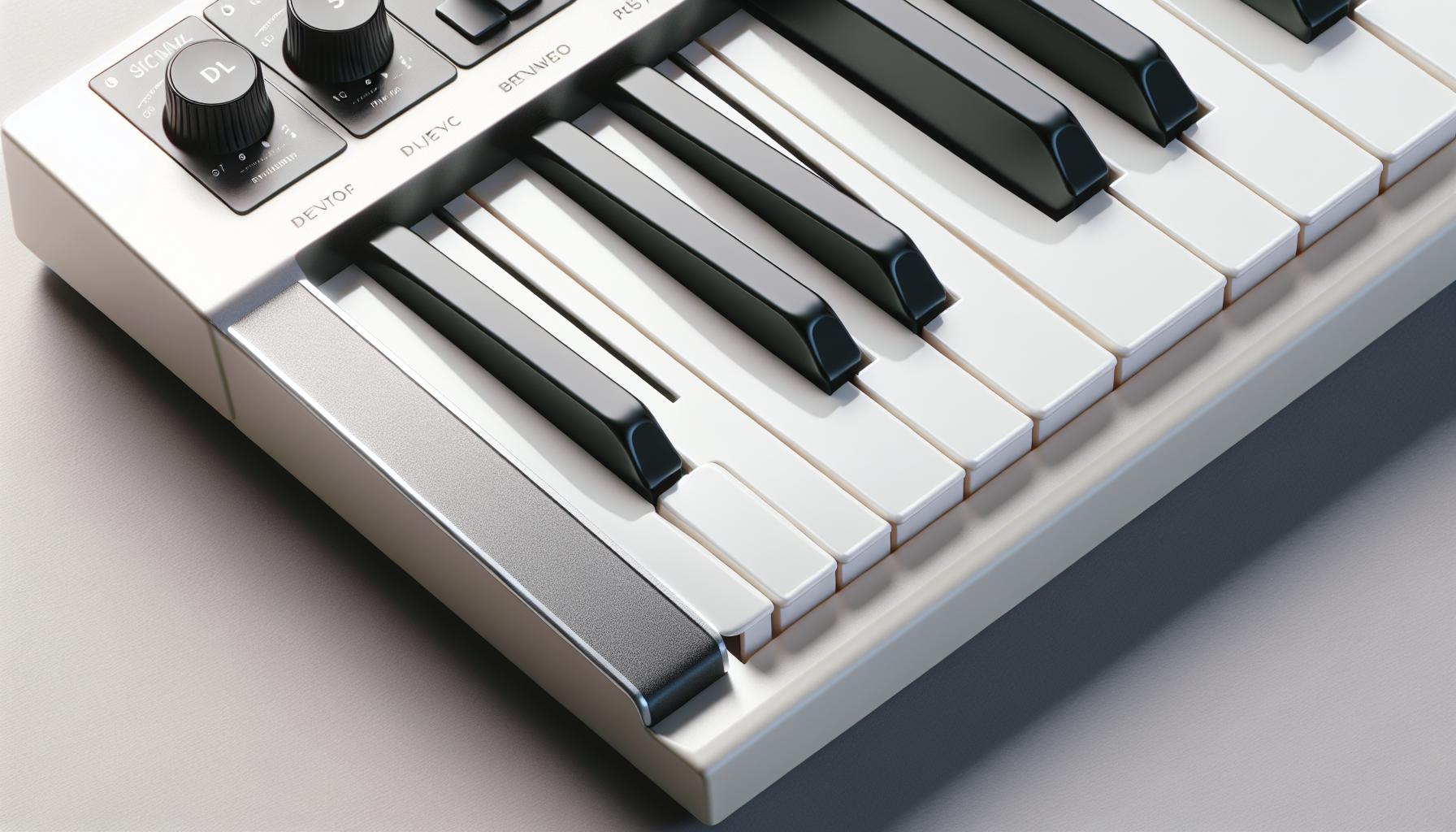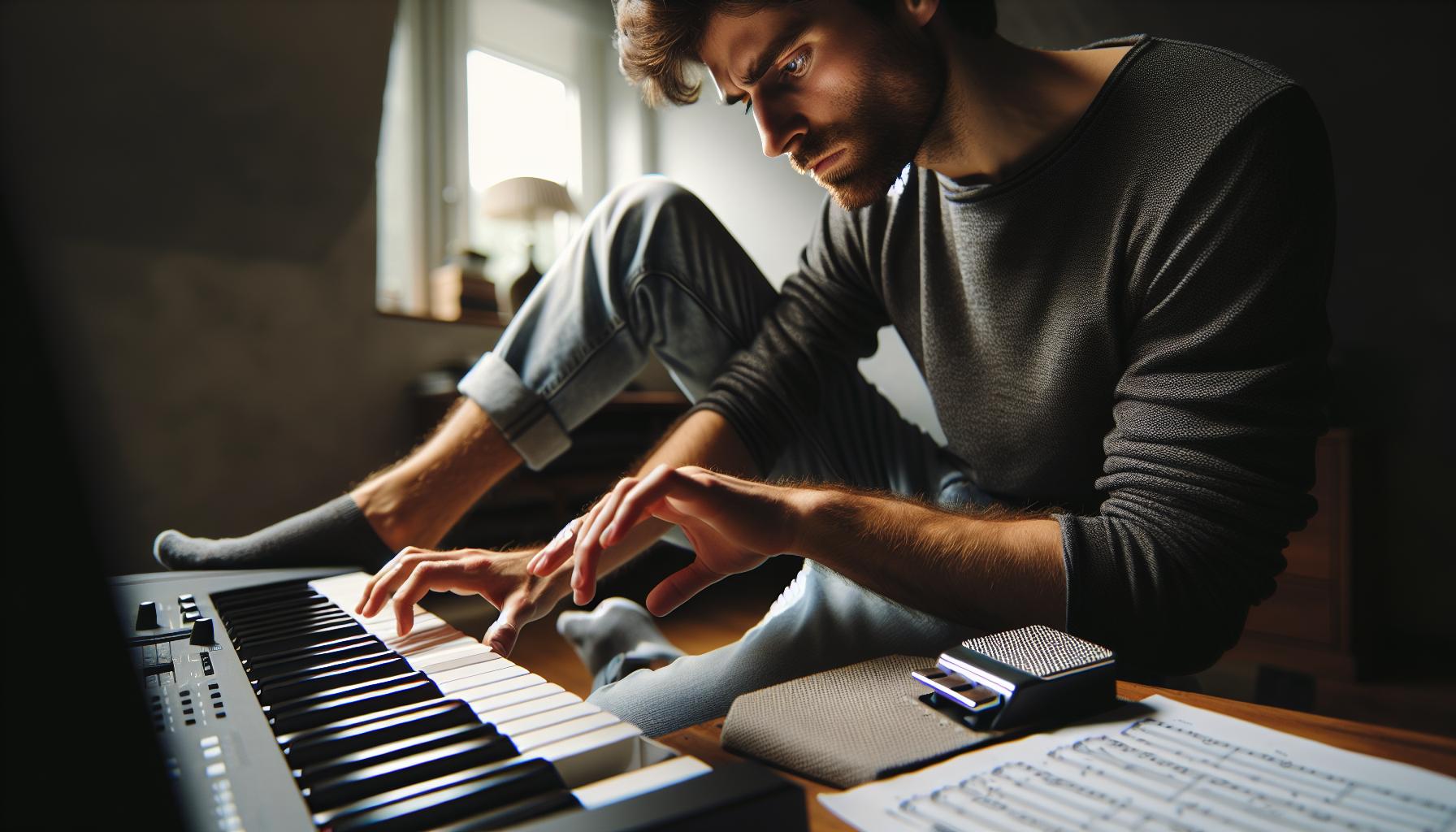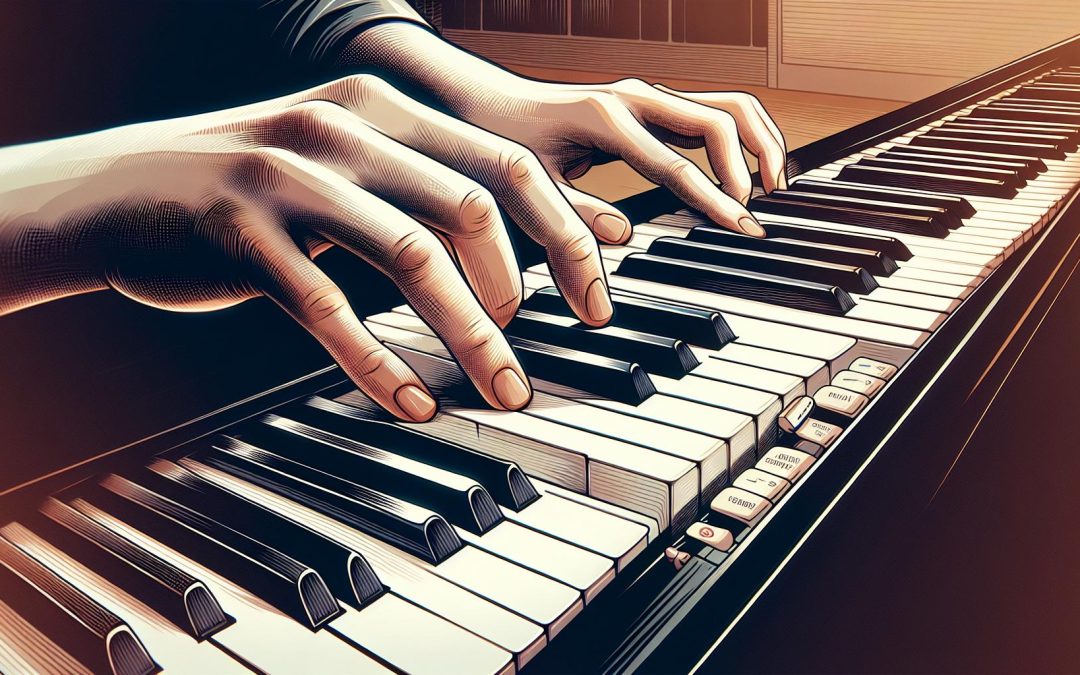Stepping into the world of music can be as thrilling as it is daunting, especially for beginners. Finding the right instrument to start this journey is crucial, and for many, a keyboard offers the perfect blend of versatility and simplicity. But what really sets the stage for an enriching musical experience? A beginner keyboard with a sustain pedal included, that's what.
Imagine being able to add depth and emotion to your playing from the get-go. That's the magic a sustain pedal brings to the table. It's not just an accessory; it's a gateway to expressing yourself more fully through music. And when it's included with your keyboard, you're all set to explore the vast landscapes of melodies and harmonies without any extra hassle.
Benefits of Having a Sustain Pedal for Beginners
When embarking on the journey of learning a keyboard, beginners might not initially grasp the full spectrum of musical expression available at their fingertips. Integrating a sustain pedal into the learning process from the get-go can significantly enhance the depth and emotion of their playing. This section delves into the various benefits beginners can enjoy when their keyboard setup includes a sustain pedal.
First off, the sustain pedal offers a smoother transition between notes, which is crucial for beginners who are still mastering the art of playing fluidly. Without a sustain pedal, notes might sound choppy or disconnected, especially when a player is moving between chords or trying to play legato passages. This pedal allows for a more legible and coherent sound, much like linking sentences in a story for it to flow better.
Moreover, the use of a sustain pedal fosters a deeper understanding of musical texture and dynamics. Young musicians learn to appreciate how holding a note longer can affect the emotional weight of a piece. They'll discover that the sustain pedal is not just about extending the sound but also about adding layers and richness to their music. This added dimension encourages beginners to experiment with their touch and pedal use, fostering a more nuanced approach to playing.
Using the sustain pedal also introduces beginners to the concept of pedal etiquette—knowing when and how much to use the pedal. This aspect of keyboard playing is essential for anyone wishing to advance in their musical education. It's a skill that requires practice and develops over time, starting with simple exercises and eventually evolving into more sophisticated pedal techniques.
Furthermore, a sustain pedal can greatly aid in building hand coordination. Initially, beginners might find it challenging to coordinate their hands and feet simultaneously. However, with consistent practice, this difficulty becomes an opportunity to enhance overall musical coordination and multitasking skills—a fundamental aspect of becoming a proficient keyboard player.
Lastly, the joy and satisfaction that come from producing beautiful, resonant sounds with the help of a sustain pedal cannot be underestimated. It's incredibly motivating for beginners to hear the immediate impact of the sustain pedal on their music. This motivation is crucial in the early stages of learning an instrument, keeping students engaged and eager to explore further.
Features to Look for in a Beginner Keyboard with Sustain Pedal

When embarking on the musical journey of learning the keyboard, selecting the right instrument is crucial. For beginners, a keyboard that comes with a sustain pedal is invaluable, as it allows for more expressive playing from the start. However, not all keyboards are created equal, and certain features can greatly enhance the learning experience. Here are key features to consider when choosing a beginner keyboard with a sustain pedal.
Quality of the Sustain Pedal
The sustain pedal is more than just an accessory; it's an essential tool for producing rich and nuanced sounds. Beginners should look for keyboards that come with a durable and responsive sustain pedal. A pedal that closely mimics the feel of an acoustic piano pedal offers the most authentic experience, allowing for subtle control over the sustain of notes.
Number of Keys
For beginners, a keyboard with 61 to 76 keys is often more than sufficient. It provides enough range to play a wide variety of music without overwhelming the learner with too many options. However, if space and budget allow, an 88-key keyboard offers a full piano range, making it a choice that beginners can grow into.
Touch Sensitivity
One of the most important features to look for is touch sensitivity. This feature allows the keyboard to respond to the force with which keys are pressed, producing louder sounds for harder presses and softer sounds for lighter touches. Touch sensitivity is crucial for developing expressive playing and dynamics, key components of musicality.
Sound Quality
The overall sound quality of the keyboard should not be overlooked. Beginners need a keyboard that produces clear, vibrant sounds to keep them motivated and engaged in their practice. Look for keyboards that offer a range of sounds and tones, including different piano tones, as this variety can enhance practice sessions and encourage exploration.
Built-In Learning Tools
Many beginner keyboards come equipped with built-in learning tools, such as lesson modes, light-up keys, and pre-recorded songs. These features can provide valuable support for self-teaching beginners, helping them to develop their skills at their own pace. Additionally, keyboards with headphone jacks allow for quiet practice, which is especially beneficial for households where noise might be a concern.
Top Recommendations for Beginner Keyboards with Included Sustain Pedal

When stepping into the world of music, it's crucial to get hands-on an instrument that not only fits the budget but also supports the learning curve of beginners. Among the plethora of options available, some keyboards stand out for their quality, features, and the crucial inclusion of a sustain pedal. Here's a look at some of the top recommendations for beginner keyboards that come with a sustain pedal included, making them a valuable package for those starting their musical journey.
Yamaha PSR-EW310—This model is a fantastic choice for beginners, offering a 76-key layout that provides more room for musical exploration compared to the standard 61-keys found in many beginner models. The included sustain pedal enhances expressive playing, and the keyboard boasts touch-sensitive keys alongside a suite of educational features. Yamaha's renowned sound quality is a given, making it a solid investment for learners.
Casio CTK-2500—Another great option is the Casio CTK-2500, which includes a 61-key keyboard perfect for beginners not yet ready to navigate a full 88-key piano. The package includes a ready-to-use sustain pedal, enriching the playing experience by allowing sustained notes and chords. The keyboard also features built-in lessons, making it easier for beginners to learn at their own pace.
Alesis Recital—A standout choice for its full 88-key digital piano experience at an entry-level price point. The Alesis Recital comes with semi-weighted keys, an important feature for those looking to transition to an acoustic piano eventually. The included sustain pedal, combined with its 128-note polyphony, ensures a smooth playing experience without note drops, even during complex passages.
| Model | Number of Keys | Features | Suitable For |
|---|---|---|---|
| Yamaha PSR-EW310 | 76 | Touch-sensitive keys, educational tools | Beginners wanting room to grow |
| Casio CTK-2500 | 61 | Built-in lessons, lightweight | Beginners and younger players |
| Alesis Recital | 88 | Semi-weighted keys, 128-note polyphony | Beginners seeking an authentic piano experience |
Tips for Using a Sustain Pedal Effectively

When beginning their musical journey, many learners find using the sustain pedal a bit daunting. However, with the right approach, they can master this essential skill to enhance their keyboard playing. The sustain pedal, when used effectively, can breathe life into music, making it sound fuller and more expressive. Here's how beginners can start integrating the sustain pedal into their practice sessions seamlessly.
Start With Simple Pieces: Initially, they should choose simple songs or pieces to practice with. This allows them to focus on the timing and coordination needed between pressing the keys and the sustain pedal without being overwhelmed by complex musical notes.
Pay Attention to Pedal Timing: Timing is crucial when using the sustain pedal. They should press the pedal right after they play a note for a seamless sound transition. Releasing the pedal should also be timed correctly – right before they play the next note or chord to avoid unwanted blending of sounds.
Practice Pedaling Techniques
There are various pedaling techniques that they can explore as they become more comfortable with the sustain pedal:
- Legato Pedaling: This involves smoothly transitioning between notes or chords by overlapping the pedal press slightly with the next note. It's ideal for creating a connected, flowing sound.
- Selective Sustaining: Not every piece requires constant pedaling. They should learn to be selective, using the pedal only when it enhances the music without muddying the sound.
Incorporate Pedal into Daily Practice
Integrating the sustain pedal into daily practice routines is key to mastering its use. They can start with scales and arpeggios, practicing the press and release of the pedal with each change in harmony. Progressively, they can incorporate pedaling into more complex pieces, experimenting with different techniques to discover what works best for the music they're playing.
Listen and Adjust
Listening is a crucial component of effective pedaling. They should listen attentively to the sound they produce when using the pedal. If notes sound too blurred or disjointed, they need to adjust their pedaling technique, either by changing the timing of their pedal presses or by using the pedal more selectively.
Seek Feedback
For beginners, receiving feedback from a teacher or more experienced musicians can be invaluable. A second pair of ears can help identify issues in pedal use that they might not notice themselves. Feedback not only helps in refining their pedaling technique but also boosts their overall musicality.
Conclusion
Choosing the right beginner keyboard with a sustain pedal is just the start of an exciting musical journey. By starting with simple pieces and focusing on the nuances of pedal timing, beginners can gradually master the art of pedaling. It's crucial to incorporate the sustain pedal into daily practice, paying close attention to the sound and making adjustments as needed. Remember, the goal is to enhance your musical expression, so listen closely, adjust your technique, and don't hesitate to seek feedback. With patience and practice, using a sustain pedal will become second nature, adding depth and emotion to your piano playing.
Harlan Kilstein began playing piano during covid with no piano background at all. He taught himself how to play learning what to do and what not to do.
Today he's an advanced intermediate player and can help you grow in your skills because he learned all this on his own.








